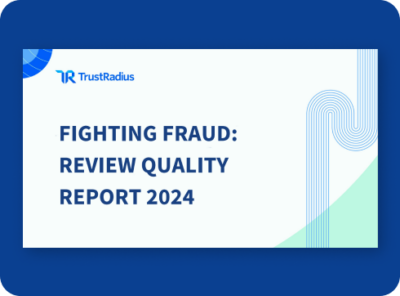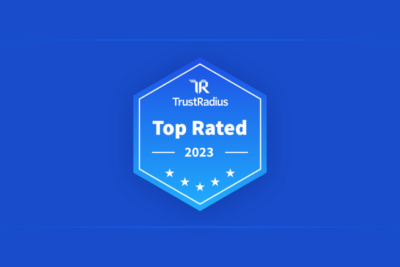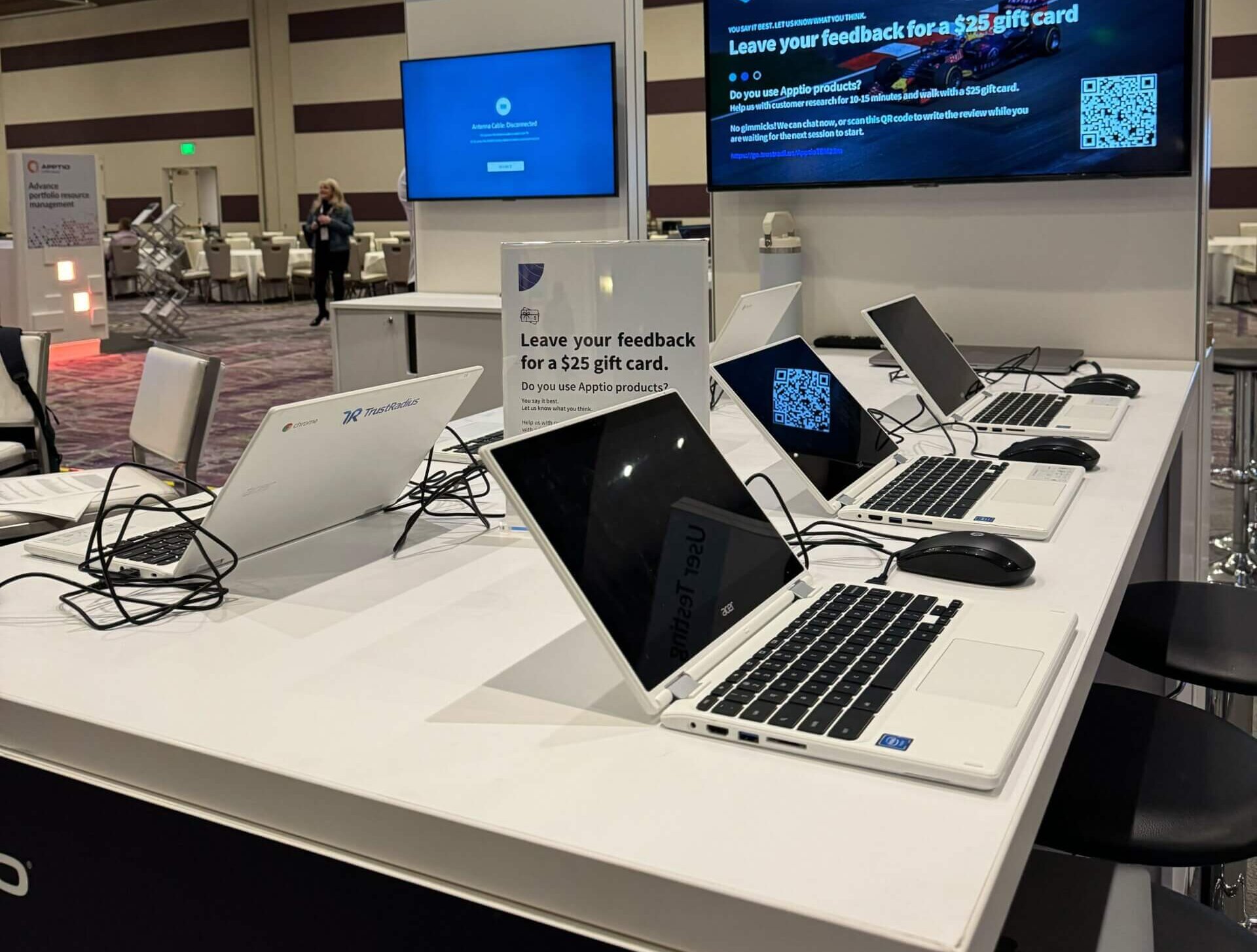The Influence of B2B Reviews on Brand Trust
Picture this: you’ve finally been given the green light to upgrade the document manager you’ve been dealing with since you started your job two years ago. After a quick web search, you create a shortlist of your favorite products. Three demos later, you select the front-runner. Internal stakeholders are consulted and finance signs the contract.
It’s picture-perfect—until it comes time to implement, and there’s a snag. You soon realize you need an engineer to integrate the shiny new product into your tech stack but have no resources to get it done. Well, snap. You just helped your company sign over $50,000 for a piece of software you can’t use, and now you have to explain it to your team.
That’s a dark picture to imagine, but it happens. No buyer wants to make a software decision that negatively impacts their team or their reputation because they were given wrong or inadequate information. So, how can buyers research the right way to make sure that doesn’t happen? What questions should be asked? And who within your industry is trustworthy for advice to build confidence in a product?
You can answer all of those questions by going to a trusted platform where your peers are, and where real users share legitimate insights with role-specific feedback. There are a lot of review sites out there with fake reviews—plagiarized, written by AI, people claiming to be real users—the list goes on. But you won’t find that on TrustRadius.
Since the very beginning, TrustRadius has taken a proactive approach to fighting fake reviews.
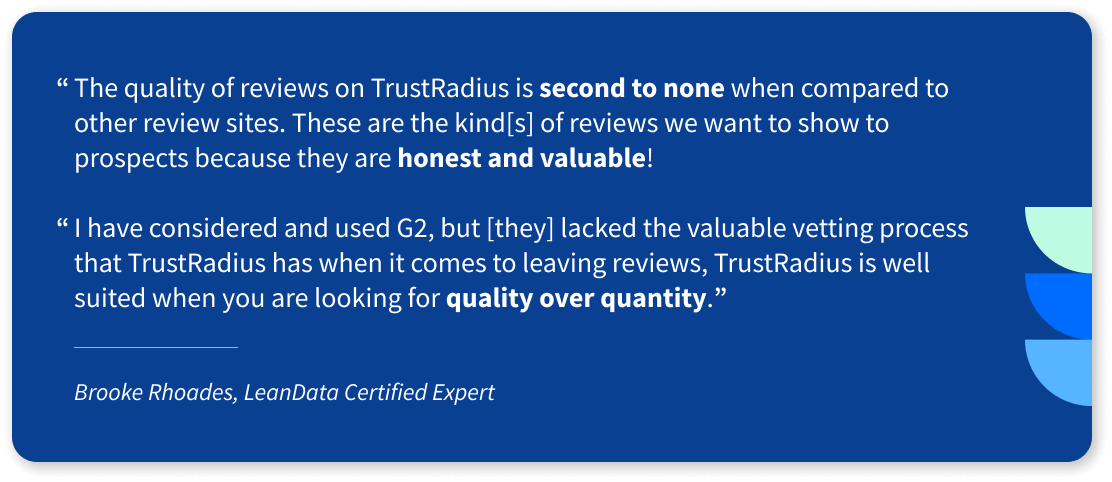
Verification is a must
Did you know that we read every review before publishing it to our site?
Have you ever gone to Yelp or Amazon and seen minimal or irrelevant reviews? Last week, I looked at a notebook on Amazon and checked the reviews. Dozens were for an entirely different product, and multiple mentioned they were being given $5 to write a positive review, but they hadn’t used it yet. At the time of writing, this was the #3 notebook on Amazon with a five-star rating. Those kinds of reviews and ratings are useless to me (and everyone else) because they tell us nothing of value.
That’s why at TrustRadius, we’ve built a method for verifying users and analyzing behavior patterns before publishing anything. Strict moderation of reviews before being accepted is our first line of defense, and is not done to the same extent by anyone else. Brooke Rhoades of LeanData shared that they used G2 in the past but it “lacked the valuable vetting process that TrustRadius has when it comes to leaving reviews.”
Just publishing anything that gets submitted isn’t going to cut it for buyers, or for us.
To show you what I mean, here’s a breakdown of (part of) our vetting process:
1. Verify the user. We look at each reviewer’s employment and position and check that their LinkedIn or business email is legitimate. When verifying work emails, we look at the authenticity of the company domain, confirm the IP address location, and with the help of our research analysts, confirm position-appropriate software usage. When evaluating users on LinkedIn, we look for key indicators, including but not limited to the user’s activity, employment, network, certifications, and other identifying information.
A LinkedIn with Brad Pitt as the profile photo or a cloned email domain does not lend confidence that the person is real. There are other factors as well, but those are top secret.
2. Analyze what is being said. In order to qualify for publication, a review needs to contain specific details about an individual user’s experience, so we look for insights about how the product serves their role. Guidance around features, comparisons to alternatives, warnings about limitations and gotchas, and a clear picture of the use case for their company are all helpful. Most users spend at least 15 minutes writing their review on TrustRadius, and on average, their reviews are 300+ words. Reviews that are sparse with little to no individual perspective do not offer guidance for prospective buyers of a given product. Nor do they provide feedback the vendor can act on to improve their product or service. Instead, reviews must be in-depth, original, and not plagiarized or created using artificial intelligence.
If the review doesn’t give examples that are relevant to the user’s job or if the software the reviewer is writing about doesn’t make sense for their position, like an HR Director of People reviewing cybersecurity technology, that would send up red flags in our system.
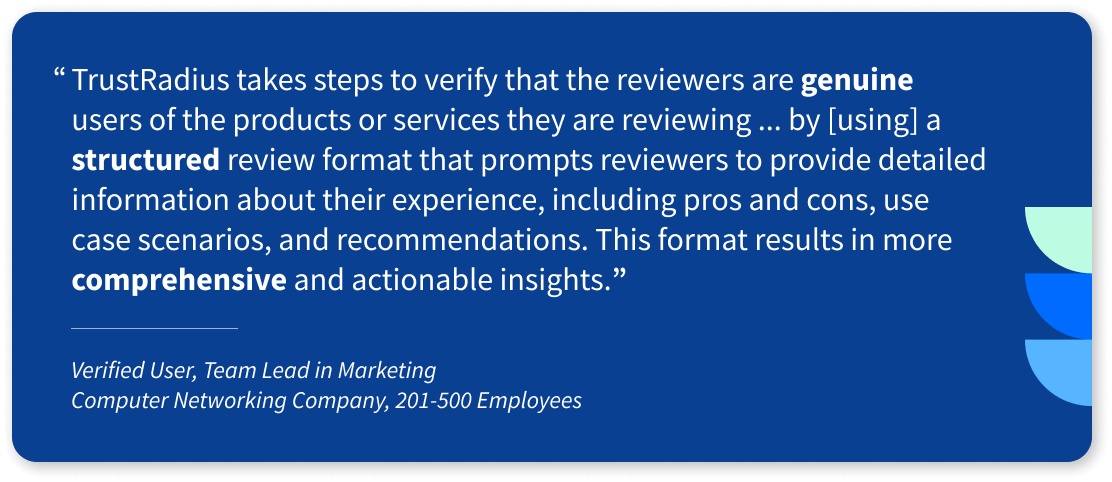
A trusted buying experience
Just like no buyer wants to buy the wrong product, no vendor wants to deal with a customer who feels misled after purchasing due to fake reviews, but don’t just take my word for it. A TrustRadius for Vendors user shared that “this validation process adds credibility and trustworthiness to the reviews, ensuring that they are more reliable sources of information.”
Buyers are smart. The difference in review quality and authenticity is palpable from their perspective, which means info-rich reviews build trust in their buying journey. One buyer on TrustRadius said, “TrustRadius was impressive, with a wide range of reviews from verified users. I found the reviews very informative and valuable, as they provided insights into the user experience, features, and customer support of each software.”
What’s the motivation for bad actors?
Why would someone write a fake review anyway? And what motivates someone to review products they don’t use? Unfortunately, the number one motivator for bad actors is gift cards.
Even so, incentives are often offered by TrustRadius for a user’s time regardless of their sentiment toward the product. By valuing their time, we can collect more insights, however, we also know there will be those with nefarious intent trying to take advantage of the incentives. To combat this, we go above and beyond to test link hygiene, follow up with reviewers, and analyze user-generated content because our platform is dedicated to providing legitimate feedback for buyers to make informed decisions.
To ensure transparency on TrustRadius, you’ll also find a disclosure of any incentives the reviewer was offered and whether or not the review has been verified as part of a representative sample free from bias or cherry-picking.
Fighting Fraud: Review Quality Report
To really dive into how TrustRadius fights fake reviews and what a comprehensive review verification process looks like, we recently released our annual report, Fighting Fraud: Review Quality Report 2024. In it, you’ll discover why TrustRadius is the go-to for gathering collective confidence amongst the buying community through unbiased genuine reviews and product information.



